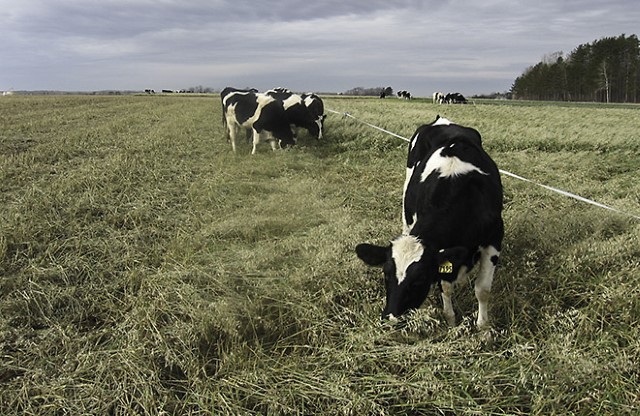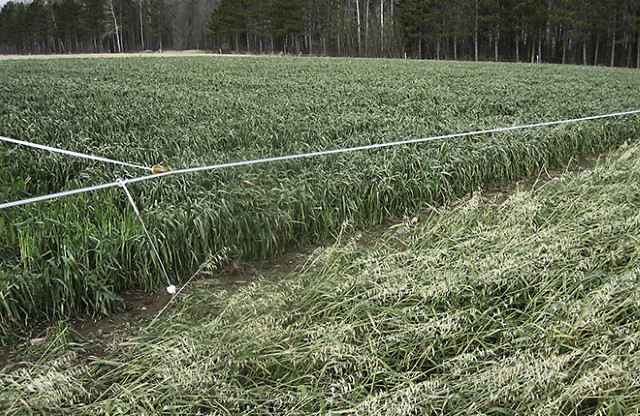Optimizing Oats for Use as Dairy Forage
Wisconsin dairy producers are increasingly adopting a practice that makes economic and environmental sense: raising oats in the fall as forage for their cattle.
Dairy producers plant the oats in early to mid-August and either allow them to be grazed through late November or harvested as silage in early November for later use. The strategy allows production of an additional forage crop before winter. The oats also “scavenge” excess nitrogen from the soil, and the plant residues enrich the soil.
Fall oats also are usually planted after the harvest of cereal grains, such as wheat or cereal rye, or in fields where alfalfa, which is harvested every 28 days, has been killed off. “Either scenario gives producers a window in late summer that’s important from an environmental perspective, because it allows them to spread manure stored in reservoirs onto their fields during a time period other than the spring or fall hauling opportunities bracketing corn production,” says Agricultural Research Service (ARS) dairy scientist Wayne Coblentz, who is with the U.S. Dairy Forage Research Center and is based in Marshfield, Wisconsin.
Dairy producers, however, need guidance on when to allow their cattle to start grazing the fall oats and which oat cultivars to use. If they allow cattle to graze forage too early, the heifers quickly eat up whatever is available and get less forage than if the oats were given more time to grow. Putting cattle out to graze later in the fall means running the risk of inclement weather and losing oats under snow cover. Producers also need guidance on optimal cultivars. Some mature earlier than others. When oats reach full maturity, they can become coarse and have more fiber, so that cattle digest them more slowly and less extensively, and they usually eat less.
Coblentz and his colleagues planted two types of oat cultivars (an early- and a late-maturing variety) in August and put dairy heifers out to graze for 6 hours a day at two different starting dates: in late September and mid-October.
They weighed the cattle at the beginning and end of the grazing periods and evaluated the content of the oats for their nutritional value and the amount of forage mass produced. Cattle weight gain was compared with that of a control group kept in barns. Whenever the weather was unsuitable for grazing, all heifers were fed in the barns. The animal care and handling procedures were approved by a University of Wisconsin oversight committee.
After 2 years of grazing, the results showed that it’s better to put the cattle out early in the fall rather than later, and it often is better to use late-maturing cultivars. The heifers allowed to graze early gained twice as much weight per day as the heifers started about two weeks later. The late-maturing oat variety also produced higher quality forage, with more leaves, greater energy density in the plant stems and leaves, and greater concentrations of water-soluble carbohydrates to support cattle growth. The heifers also consumed more of it. Results published in the Journal of Dairy Science (September 2015) should prove useful to Wisconsin’s $43.4-billion dairy industry.—By Dennis O’Brien, ARS Office of Communications.
“Optimizing Oats for Use as Dairy Forage” was published in the November 2016 issue of AgResearch Magazine.
Key Facts
- Wisconsin dairy producers are increasingly growing oats in the fall for cattle feed.
- Producers need guidance on grazing strategies and oat varieties.
- ARS guidelines are based on yield, oat nutritional value, and cattle weight gain.
Full Story








